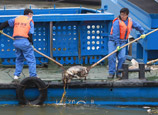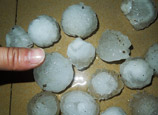
A couple of developers in Shenzhen have been caught using sea sand, which corrodes steel and leads to cracks in walls and floors, according to a TV report on Thursday.
The local housing authority said it sent two investigation teams to raid the two concrete mixing plants mentioned in the report.
The authority also said it has organized 60 professionals to carry out thorough checks of the 102 concrete mixing plants in the city.
Workers in sand fields told CCTV that developers choose sea sand because it costs around 30 yuan per cubic meter, but the safer river sand is priced at at least 165 yuan.
According to the regulation issued by the former construction ministry of China in 2004 regarding the use of sea sand in construction, sea sand must be washed by fresh water until it contains less than 0.02 percent of chloride ion.
The report said the sea sand has been widely used in both residential and commercial development, and even subway projects.
One of the projects exposed in the report is the construction of Dachong Village by China Resources (Holdings) Company, a large State-owned enterprise based in Hong Kong.
The project, located at the city's high-tech park zone, is the largest urbanization project of Guangdong province, which will turn old buildings down to build a modern compound consisting of a 300-meter-tall office building, a five-star hotel, two four-star hotels, a shopping mall with floor areas of 180,000 sq m and apartments with floor areas of 2.28 million sq m.
Workers at the concrete mixing plants developed by CRC told CCTV that sea sand and a small part of sea sand washed by water have been used in Dachong project.
CR Land, CRC's property development arm, said it would response to the TV report Friday afternoon at its financial results press conference, Securities Times reported.


















![]()
